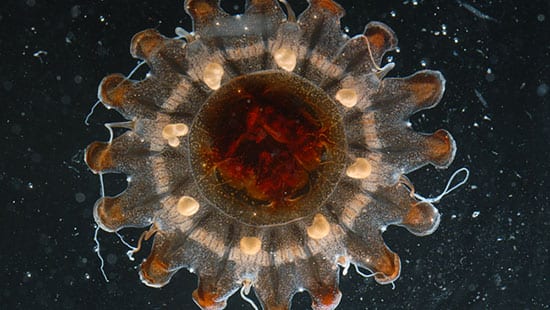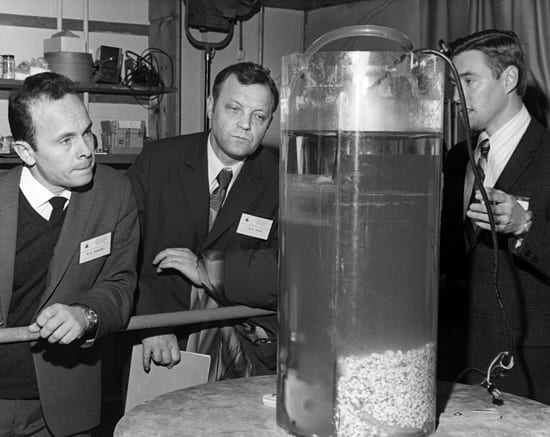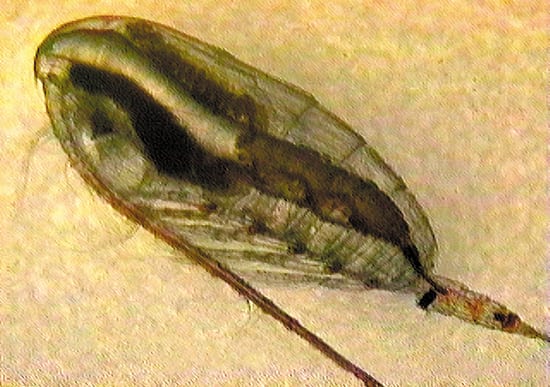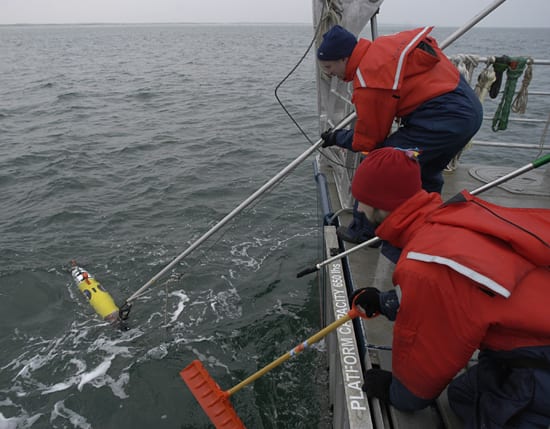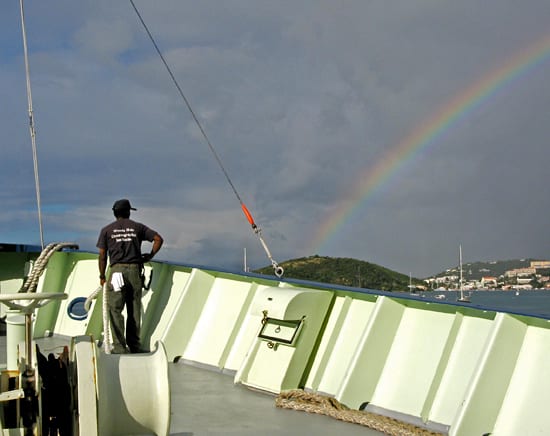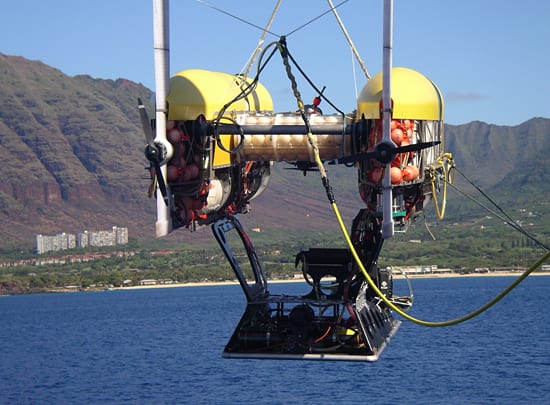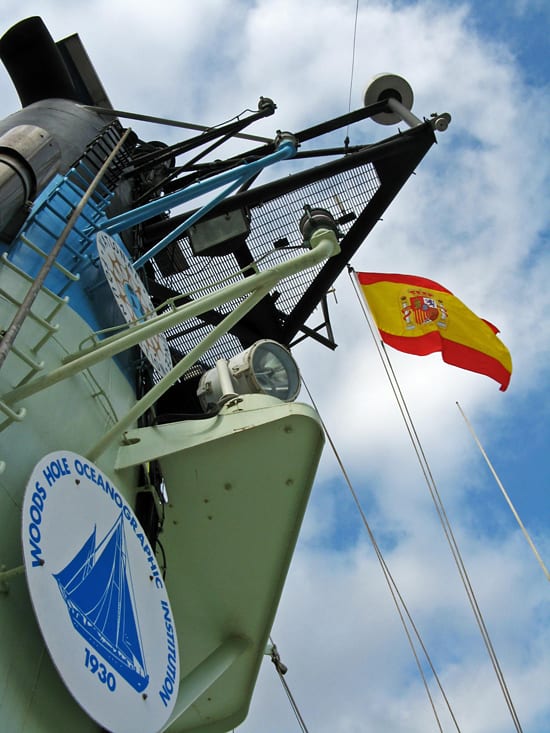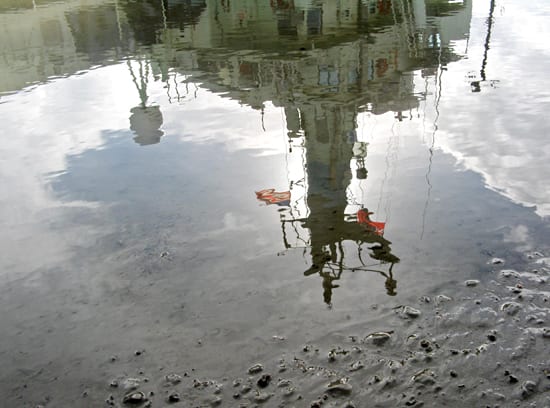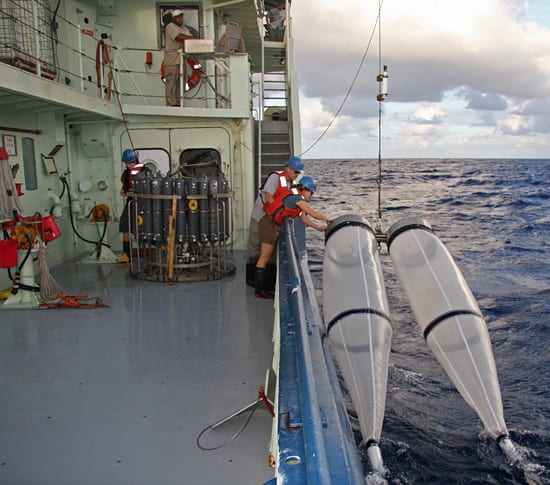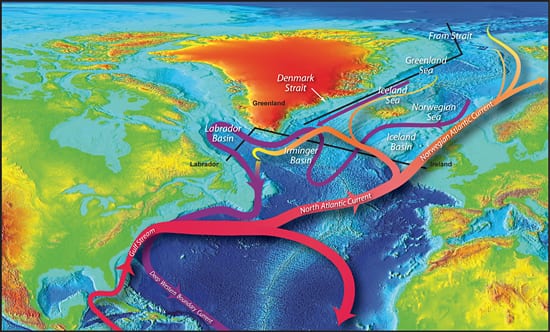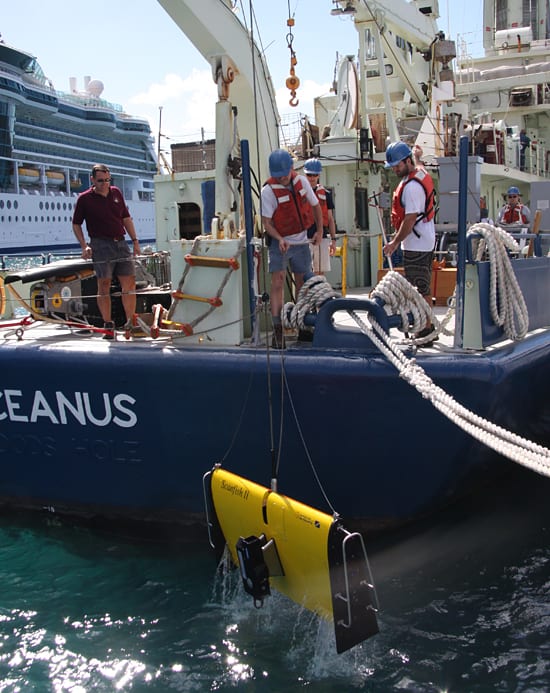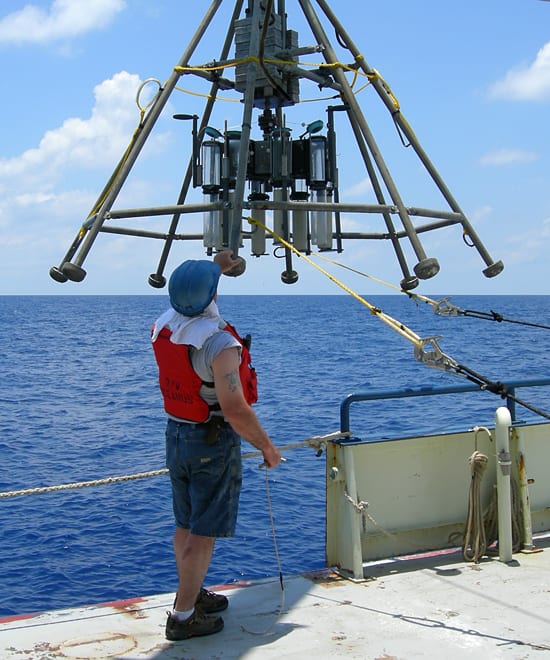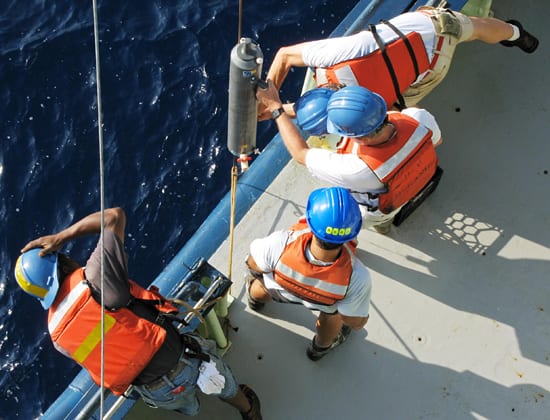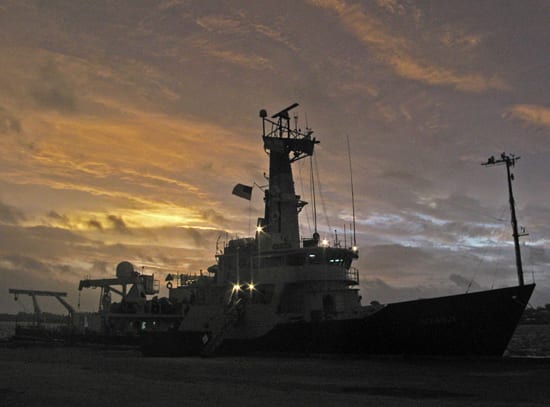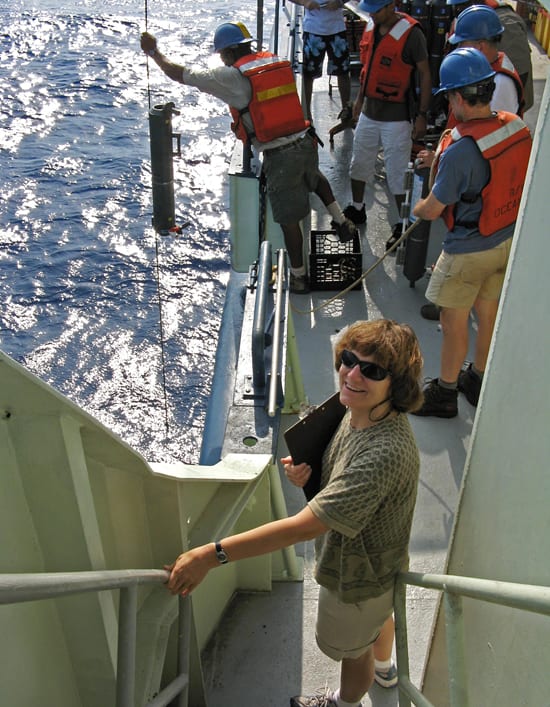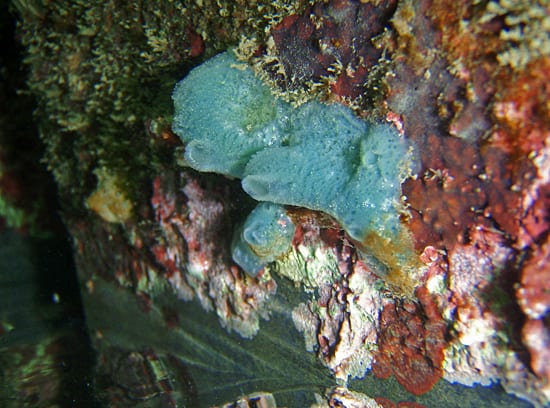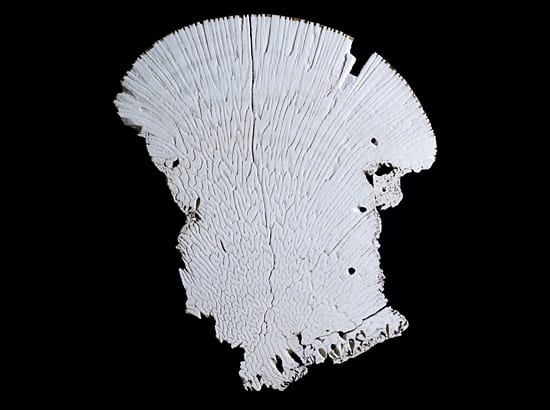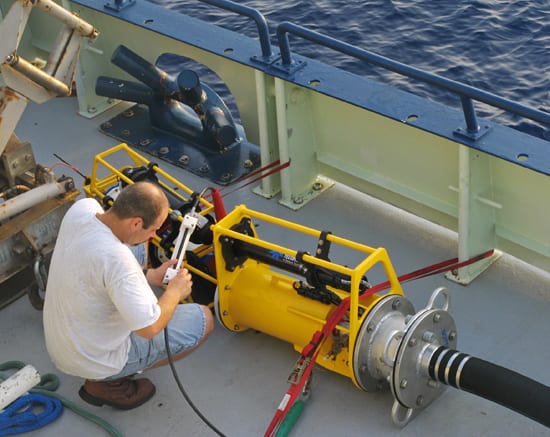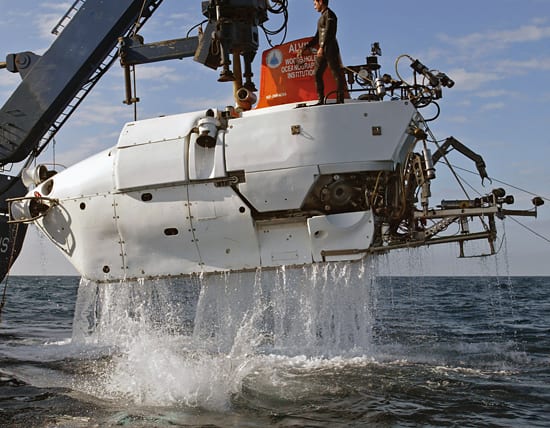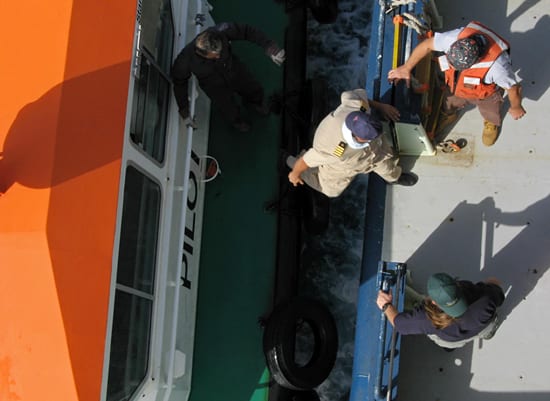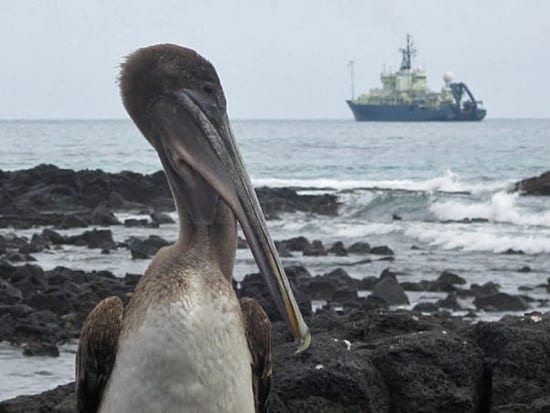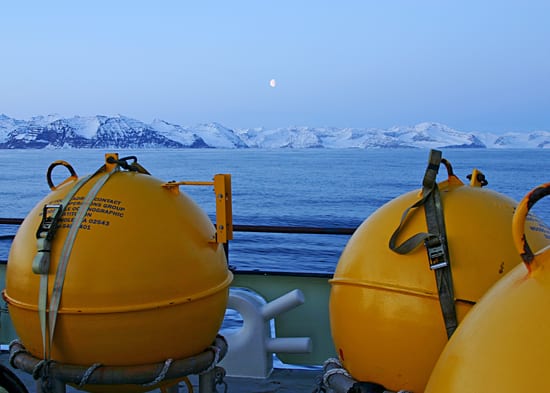Multimedia Items
Creatures of the Celebese Sea
Studying moving fluids
Physical oceanographer John Whitehead (far right) showed Russian oceanographers M. A. Bogdanov and B. B. Popov around his laboratory during a tour of WHOI in 1973, and explained an experiment…
Read MorePolar Discovery: Bering Sea Ecosystem
The Arctic ecosystem has a unique, complex food web that is fashioned by its distinctive plankton, animal species, and environmental factors. Copepods, like the one above, are a critical link…
Read MoreFishing for an AUV
Senior scientist Al Plueddemann hooks the handle of the autonomous underwater vehicle (AUV) REMUS so that it can be safely lifted onto the deck during a study of the wintertime…
Read MoreEnd of the rainbow?
Bosun Clindor Cacho admires a rainbow as the Oceanus prepares to dock at St. Thomas, U.S. Virgin Islands in November 2008, after a transit across the Atlantic. The ship, scientists,…
Read MoreAloha, Nereus
After four years of design and construction, one of WHOI’s new deep-sea exploration vehicles, Nereus, took its first plunge in deeper waters during a test cruise in December 2007 off…
Read MoreFlying the Spanish flag
The WHOI-operated research vessel Oceanus flew the Spanish flag during a stop in the Canary Islands in September, following oceanographic research by WHOI marine biogeochemist Phoebe Lam. (Photo by Alexander Dorsk, Woods…
Read MoreAfter the storm
The R/V Oceanus‘ mast is reflected in a puddle of water at Penno’s Wharf in St. George, Bermuda, following a day of torrential rains that delayed the ship’s scheduled departure.…
Read MoreDouble duty
Because ship time is valuable, scientists at sea try to use every possible minute of a cruise, sometimes collecting samples for colleagues ashore during lulls in the shipboard activity. In…
Read MoreA surprising return
One of the “pumps” that helps drive the ocean’s global circulation suddenly switched on again last winter for the first time this decade. The “pump” is in the western North…
Read MoreWill Climate Change Affect the Greenland Ice Sheet?
Glacial expeditions uncover a trigger that speeds the flow of ice to the sea
Read MoreTest before using
In-port entertainment? A dockside test of a brand-new piece of oceanographic equipment takes place next to a massive cruise ship in St. Thomas, U.S. Virgin Islands. Aboard R/V Oceanus, WHOI…
Read MoreGenerous gift for seafloor science
Able Seaman Jim McGill guides a multi-corer—resembling a lunar lander—off R/V Oceanus’ deck in the Bahamas in 2006, on a mission to collect tiny seafloor organisms. Multi-corers sample the seafloor…
Read MoreGetting into and out of hot water?
As R/V Oceanus Bosun Clindor Cacho (left) watches the oceanographic wire being pulled up out of the water, Alaa Albarakati of King Abdulaziz University, Saudi Arabia (standing), and WHOI researchers…
Read More“Red sky at morning…”
“… sailors take warning.” The old adage applies as WHOI’s ship R/V Oceanus sits at the dock in St. George, Bermuda one morning in December 2008, just before a big…
Read MoreTo sample the sea
Clipboard ready, WHOI physical oceanographer Amy Bower observes while Oceanus bosun Clindor Cacho lowers a Niskin bottle into the Red Sea to collect water. Bower led the October 2008 cruise…
Read MoreReal estate underwater
Available housing is scarce in the ocean: Any hard surface is soon blanketed, as organisms from many phyla settle on the limited space. A floating dock at a Smithsonian Tropical…
Read MoreOne last check
Engineer John Kemp, of the WHOI Mooring Operations, Engineering, and Field Support Group checks a mooring buoy just before it is deployed in the Red Sea, while engineer Jason Smith…
Read MoreA slice through history
Coral skeletons, which incorporate trace chemicals from surrounding seawater, can provide a daily archive of past ocean temperatures and environmental conditions. Using temperature records from this long-lived Bermuda brain coral,…
Read MoreHow’s the signal?
Engineer Jason Smith from WHOI’s Upper Ocean Processes Group tests part of the data-transmission system of a new mooring before deployment. The big yellow cylinder on deck to his right…
Read MoreWorkhorse of the sea
Built as the world’s first deep-ocean submersible, the human occupied vehicle Alvin can dive as deep as 4,500 meters (almost 3 miles), giving it access to some 63 percent of…
Read MorePilot on deck
The port pilot steps from the pilot boat onto the ship across a gap of churning water, ready to guide the vessel to the dock after the cruise. In this…
Read MoreAdmirer from afar
A brown pelican (Pelecanus occidentalis) checks out the WHOI-operated research vessel Atlantis off the coast of the Galápagos Islands in January 2009. R/V Atlantis and the Alvin submersible were there…
Read MorePeaceful water in a (normally) rocky sea
The Irminger Sea is known for rocky weather, but WHOI research associate Dan Torres found quiet water off the coast of Greenland during an October research cruise aboard the WHOI-operated research vessel Knorr. Buoys…
Read More
